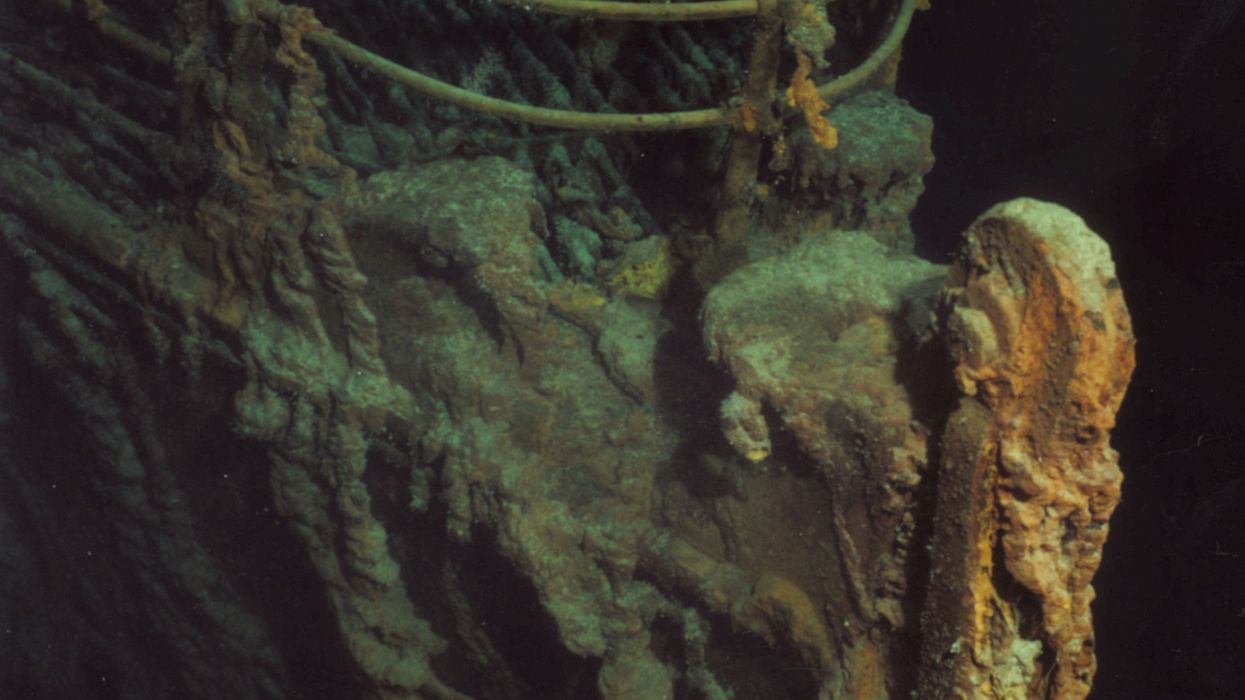The Underwater Nightmare
Imagine you’re on a lovely vacation, standing on the edge of a pristine lake. The water is clear, the sun is shining, and suddenly… what’s that below the surface? Is it a giant sea creature? Nope. It's an old rusted shipwreck, a discarded water pump, or maybe a creepy, barnacle-covered statue. If the mere thought of this makes your skin crawl, congratulations—you may have submechanophobia, the irrational (but very real) fear of submerged man-made objects. It’s like the ocean playing a terrifying game of hide-and-seek, but instead of cuddly mermaids, you’re hiding from a decrepit anchor.
What Exactly Is Submechanophobia?
Submechanophobia sounds like the name of a futuristic villain in a bad sci-fi movie, but it’s a little more grounded (or submerged, in this case). It’s the fear of man-made objects lurking beneath the surface of water. This fear could be triggered by anything from sunken ships and underwater turbines to those suspiciously friendly animatronic dolphins you see at theme parks. Basically, if it's mechanical and it's under water, it’s terrifying.
Think about it—submerged objects are like the ghosts of our industrial past, just hanging out underwater, decaying ominously and causing all sorts of havoc for your overactive imagination. Shipwrecks, giant propellers, and sunken buoys are like nature’s version of forgotten tech in a basement—only instead of finding an old Game Boy, you find a 200-ton rusted crane with seaweed for hair. Fun, right?
Why Is This a Thing?
You might be wondering, "Why would anyone fear a rusty boat under the water? It’s not like it’s coming to life and attacking us!" First off, how do you know that for sure? Have you seen the Pirates of the Caribbean movies? The Black Pearl definitely had some unfinished business. But in all seriousness, this fear likely stems from a deep-rooted (or deep-watered?) discomfort with the unknown. The ocean itself is already a vast, mysterious place, and then you throw in a giant mechanical structure that has no business being down there? It’s like Mother Nature and mankind teamed up to play a cruel prank.
Let’s face it, the ocean is intimidating enough without adding the anxiety of unexpectedly bumping into a half-submerged submarine. The fact that these objects are out of sight (until they very much aren’t) makes the surprise even worse. Combine that with their state of decay—rusted, eroded, overgrown with creepy sea plants—and suddenly, you’re in an aquatic horror movie starring nothing but inanimate objects.
Classic Symptoms of Submechanophobia
People with submechanophobia tend to have the same physical reactions you’d expect if you stumbled upon a mechanical kraken hiding under the surface:
- Instant panic: You see something metallic underwater, and your fight-or-flight instincts kick in. Spoiler alert: it’s always flight.
- Sweating: Because what could be more refreshing by the water than a good ol’ sweat-inducing adrenaline rush?
- Heart racing: Just in case you didn’t already feel like you were on an underwater rollercoaster from hell.
- The “Nope, I’m Out” Reflex: This is the moment you suddenly find yourself back on dry land, even if it means running at a speed you didn’t know you were capable of.
Avoidance is key! People with submechanophobia steer clear of lakes, ponds, aquariums, and anywhere else they might come across a sunken speedboat or an out-of-commission animatronic octopus.
The Evolutionary Roots (Or Should We Say “Fins”?)
So, where did this phobia come from? It’s not like our caveman ancestors were dodging submerged oil rigs on their way to gather berries. But maybe there’s something deeper (pun intended) going on here. Think about it: humans are naturally cautious of things they don’t understand, especially if those things are lurking beneath a surface we can’t clearly see. And while most people see a shipwreck and think, "Cool, history!" others see it and think, "Oh great, my nightmares just got an upgrade."
Plus, submerged machinery can seem especially threatening because it’s out of its element—machines are supposed to belong on land! Seeing a rusty tractor underwater feels like seeing your kitchen toaster in your bathtub. It’s not where it’s meant to be, and that’s just plain unsettling.
Pop Culture’s Love Affair with Submechanophobia
Let’s talk about how movies and TV shows love to make things worse for those with submechanophobia. Hollywood seems to enjoy throwing submerged mechanical things at us like it’s a fun, spooky surprise. Whether it’s a sunken spaceship, a flooded amusement park with animatronic sharks (that are 100% cursed, obviously), or a dark abyss with old machinery peeking out like an underwater haunted house—it’s all been done.
One of the most iconic examples? Titanic. Not only does this film feature a sinking ship (hello, anxiety), but it ends with a deep-sea dive to the wreckage, complete with cameras that zoom in on rusted beams, forgotten china sets, and creepy machinery just chilling down there like it's no big deal. Thanks, James Cameron, for taking our worst fear and turning it into a box office hit.
How to Overcome Submechanophobia (Or at Least Pretend You’re Brave)
The good news is, you’re not doomed to a life of running away from nautical-themed decor. Here are a few ways people can try to overcome submechanophobia:
- Start Small: Maybe don’t begin by confronting a sunken cruise liner. Try looking at a picture of a cute, harmless underwater turbine. Work your way up to the big stuff.
- Cognitive Behavioral Therapy: Turns out, talking about your fear of creepy underwater structures is a good way to overcome it. Just don’t be surprised if your therapist also starts sweating when you bring up shipwrecks.
- Avoid Diving at Theme Parks: We’re looking at you, Pirates of the Caribbean ride. Nothing says “irrational fear” like an animatronic pirate popping up from the depths.
Don’t Go Chasing Waterfalls (Or Underwater Objects)
Submechanophobia may seem bizarre, but for those who suffer from it, submerged objects are the ultimate terror. So next time you’re at the lake and spot something lurking just below the surface, don’t judge your friend for running to shore. After all, it’s not every day you have to confront your fear of decaying submarines on vacation!
Bonus Tip: Stick to Beaches
At least there, the most terrifying thing you’re likely to find is a washed-up jellyfish—unless, of course, you’re terrified of submerged beach umbrellas.


















